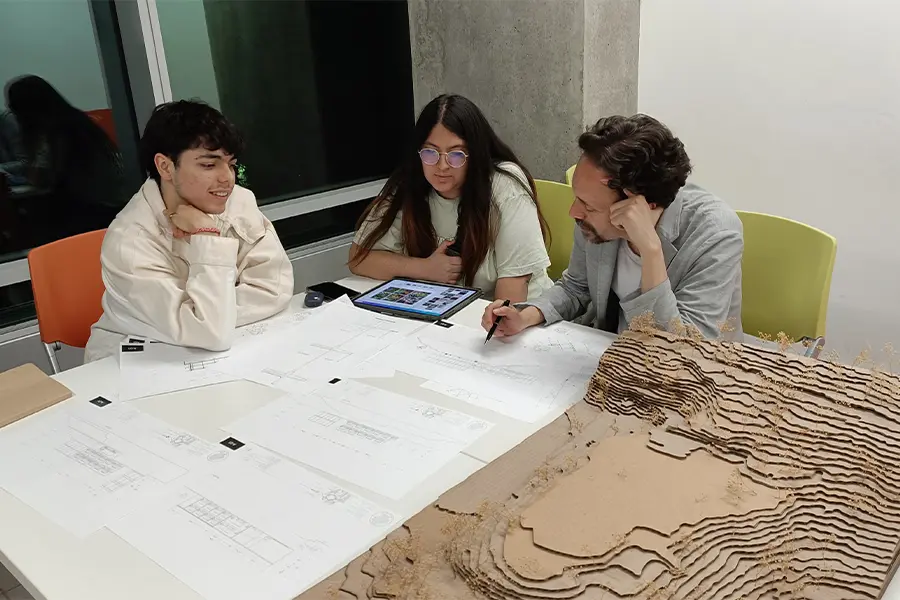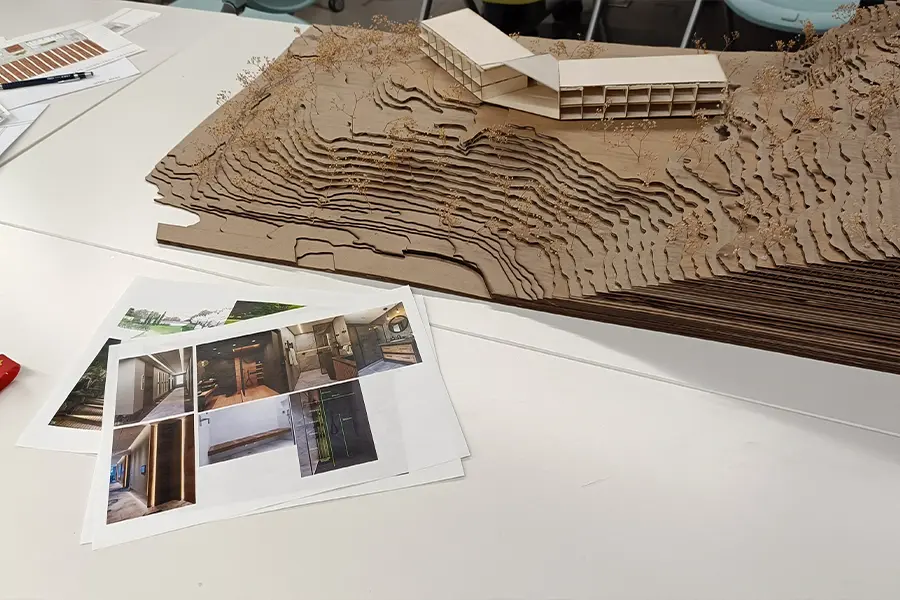To mark the 2026 FIFA World Cup, sixth-period architecture students at the Mexico City campus are facing a unique challenge in their training: to design a hotel for the High Performance Center of the Mexican Football Federation.
Unlike the actual project, carried out by global architecture firm Gensler, where professor and architect Julieta Boyserves as technical director, the challenge allows students to start from scratch and have greater creative freedom.
This mega-block challenge, entitled “Participatory Architecture of Medium Complexity,” was designed by professors to allow students to comprehensively develop their skills as future architects.

Designing for a real client using their imagination
Over 50 students from three different groups are working in teams led by Julieta Boy, an architect with experience in construction and executive projects such as Torre Reforma, where she worked for eight years.
“We’re keeping an eye on what they’re developing, what they’re researching, and how they’re solving challenges. Although we’re their guides, we also question them,” says Boy.
Therefore, with greater creative freedom and a technical approach, they propose solutions that combine functionality, sustainability, and design.
“The students are making proposals to the Mexican Football Federation on how to improve the site, with slightly fewer budgetary restrictions,” says professor and architect Rubén Nesme.
“Not every generation will have the opportunity to work on a World Cup project.” - Rubén Nesme
Just like a real-life process
For 15 weeks, students follow a process divided into three stages: five weeks of research, five weeks of preliminary design, and the final five weeks of executive project and construction details.
Nesme says each phase reflects the standards and challenges they will face as architects in the workplace.
“First, they research the location, the user, and the program. Then, they develop concepts with standards and values consistent with what they discovered. Finally, they develop a complete technical proposal”.
Boy points out how the initial analysis sets the tone for the project.
“Some focused on the main idea of rest, others on performance, and still others took a more introspective approach to the player. That modifies the entire architecture,” says Boy.
The challenge aims to ensure that proposals reveal critical and well-founded thinking, beyond aesthetic design. Priority is given to consistency with research and user needs, in this case, high-performance athletes.
“We aim to ensure that the proposals don’t contradict what they investigated, that they respect traffic flow, player privacy, and weather conditions,” adds Nesme.

More than just an architectural challenge
This mega-block challenge is much more than just a class assignment for the students; it’s their first encounter with a real client, with a specific problem, and an international audience.
“Not all students will have the opportunity to do a project for the World Cup. They’ll think back and say, ‘I designed a hotel for the Federation during the 2026 World Cup,’” says architect Nesme.
Although the project is hypothetical, the professors say the students’ professionalism and dedication have exceeded all expectations.
“They’re building models, rendering, and drawing up plans, experiencing it as if it were a real project. I think that’s the best part,” concludes Julieta Boy.
YOU’LL SURELY WANT TO READ:





